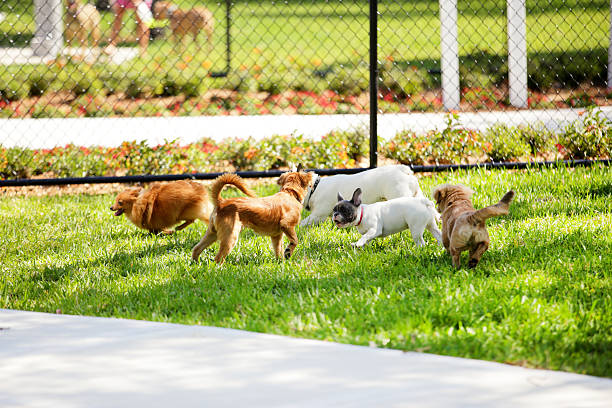In the heart of the city or nestled in the suburbs, dog parks serve as vital green oases. They are an escape, a breath of fresh air, and a playground for our four-legged friends. In these dog parks, pet owners not only get to let their dogs play and socialize but also form a community of their own. However, amidst the frolicking, barking, and jangling of collars, a question emerges: how do we maintain effective noise control?
Noise control in dog parks is a balancing act between allowing dogs to express their natural behavior and ensuring the local community is not disturbed. This delicate equilibrium is achievable, and in this post, we will explore the effective strategies to navigate noise control in dog parks.

1. Smart Design and Planning
The first step toward noise control starts even before a park is built. When designing a dog park, planners should consider factors such as park size, location, and structure. A larger park can disperse sound more effectively than a smaller one, while location can determine how the noise impacts surrounding residents. The park should ideally be located away from residential zones or at least have adequate buffer zones.
Strategic placement of vegetation and trees can also help absorb sound and reduce noise impact. Structures such as hills or mounds within the park, as well as walls, fences, or barriers, can serve as noise dampeners, thereby reducing the sound waves that escape the park.
2. Establishing Park Rules
Establishing and enforcing park rules can significantly reduce noise levels. While it's unreasonable to expect dogs not to bark at all, rules can be implemented to discourage excessive or prolonged barking. Other rules, such as limiting the number of dogs each person can bring into the park, can also help manage the noise levels.
3. Use of Noise Barriers
Implementing noise barriers such as sound-absorbing fences and walls can help contain the noise within the park. These barriers are particularly useful if the park is located near residential or noise-sensitive areas. While these structures can be costly, they are a worthwhile investment for maintaining a harmonious neighborhood.
4. Encouraging Responsible Ownership
Education and responsible pet ownership go hand-in-hand. Encourage dog owners to train their pets to respond to basic commands, including those to stop barking. Seminars, workshops, or informational handouts on responsible pet ownership and dog behavior can help educate park visitors, leading to a more enjoyable and less noisy environment for everyone.
5. Active Park Management
Regular monitoring and management of the park can help mitigate noise issues. Park rangers or attendants can be tasked with managing the number of dogs in the park at any given time and enforcing park rules, which include addressing excessive noise.
Noise control in dog parks is not just about keeping the peace in the neighborhood; it is also about providing an environment where dogs can freely socialize without causing discomfort to others. Striking this balance may seem challenging, but with careful planning, strategic design, and a community of responsible dog owners, it is entirely possible. After all, the goal is to create a community space that everyone, including our four-legged friends, can enjoy.
Opening a dog park? Schedule a demo with Gingr to learn how our software can make managing your business a breeze!
Subscribe to the Gingr Blog






